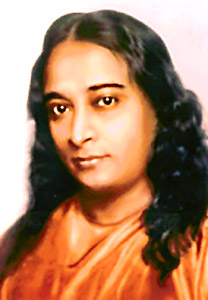 Paramahansa Yogananda formed Yogoda Satsanga Society of India in 1917. The headquarters or the Yogoda Satsanga Math is situated on the banks of the Ganges at Dakshineswar, near Kolkata. Another branch of this math is at Ranchi, Jharkhand and also many more branch centers. Other than meditation centers throughout India, there are twenty-three educational institutions, from primary through college level all controlled by Yogoda Satsanga Society of India. "Yogoda," is a term coined by Paramahansa Yogananda. The term is derived from Yoga, union, accord, balance; and the term da, means, "that which imparts". "Satsanga" is the term made of Sat, truth and Sanga, fellowship. For the west, Paramahansaji translated the Indian name of Yogoda Satsanga Society of India as "Self-Realization Fellowship (SRF)."
Paramahansa Yogananda formed Yogoda Satsanga Society of India in 1917. The headquarters or the Yogoda Satsanga Math is situated on the banks of the Ganges at Dakshineswar, near Kolkata. Another branch of this math is at Ranchi, Jharkhand and also many more branch centers. Other than meditation centers throughout India, there are twenty-three educational institutions, from primary through college level all controlled by Yogoda Satsanga Society of India. "Yogoda," is a term coined by Paramahansa Yogananda. The term is derived from Yoga, union, accord, balance; and the term da, means, "that which imparts". "Satsanga" is the term made of Sat, truth and Sanga, fellowship. For the west, Paramahansaji translated the Indian name of Yogoda Satsanga Society of India as "Self-Realization Fellowship (SRF)."
The Society publishes Paramahansa Yogananda`s priceless writings, lectures, and informal talks - including his all-inclusive series of Yogoda Satsanga Lessons for home study, publishes, audio and video recordings based on his teachings; oversees its ashrams, kendras, and meditation centers, and its monastic community; conducts lecture and class series in almost each and every city all across the Indian subcontinent; and coordinates the Worldwide Prayer Circle. A wide network of groups and individuals dedicated to praying for those in need of physical, mental, or spiritual aid and for global peace and harmony are welcomed at the Yogoda Satsanga Society of India.
Yogoda Satsanga Society of India answers all the inquiries about the teachings of Sri Sri Paramahansa Yogananda from the countries like Bangladesh, Bhutan, India including Andaman and Nicobar Islands, Nepal, Maldives Islands and Sri Lanka. The programmes executed at the Yogoda Satsanga Society of India include Kriya Yoga Diksha Ceremonies, Conducted Spiritual Retreats, Janmotsav at Ahmedabad and Bangalore (to be held in 2009) and Sadhana Sangam Delhi in October.



















